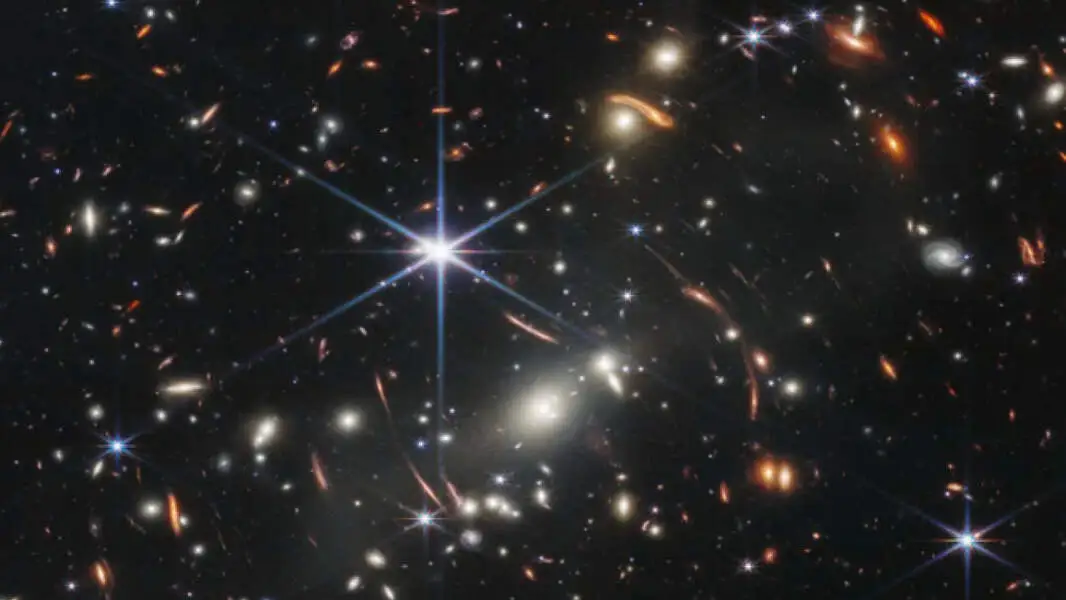Science
The first Webb Space Telescope Image is so Twisted, warped, and Weird

As found in the primary picture NASA let out of the Webb Space Telescope, a few universes seem like long strings of taffy that have been extended.
Thus, our perspective on the profound universe has been modified by the actual universe.
SMACS 0723 is a bunch of universes that has been found by a cosmologist utilizing the James Webb Space Telescope, the world’s biggest telescope. As well as containing billions of stars, a large number of dark openings, and maybe trillions of planets, worlds are tremendously monstrous items. A bowling ball sitting on a bedding twists space as its mass is joined between these universes.
SEE ALSO: NASA released from the Webb Space Telescope
There is a sense where this distorted space makes a “focal point” through which we view the world. Subsequently, the light that we (or the Webb Space Telescope) see from the worlds behind this cosmic group has been twisted by the universes behind it. It is a peculiarity known as “gravitational lensing.” According to the Space Telescope Science Institute, which runs the telescope, it resembles the earth has a camera focal point among us and the universes somewhere far off.
100 years back, Albert Einstein anticipated that gravitational lensing would meaningfully affect the universe. Subsequently, a significant number of the worlds we can see beneath in Webb’s initial profound investigate the universe are enormously amplified, and others are mutilated or extended in significant ways.
At the divulging of Webb’s most memorable logical pictures, NASA astrophysicist Jane Rigby said: “They have been amplified as Einstein anticipated they would, similarly as Einstein anticipated they would be”

NASA calls this image “Webb’s First Deep Field.” It’s an image of the galaxy cluster “SMACS 0723.” The mass of the galaxies distorts, and magnifies, more distant galaxies in the background Credit: NASA / ESA / CSA / STScI
As per the picture over, the bunch of white-looking, ethereal systems in the picture is believed to be a few 4.6 billion years of age. During a similar period when the sun and the Earth framed, the stars were likewise shaped, said Rigby. The view behind us is twisted and amplified by these white systems where an amplifying focal point is situated.
Some of the more far off objects in the universe are among the most established objects known to man, including both unusually misshaped cosmic systems and the red specks. As per Harald Ebeling, a space expert at the University of Hawaii Institute for Astronomy, in an explanation delivered to the media, every one of the exceptionally weak, dim red spots, as well as a significant number of the more brilliant, strangely molded objects found in this staggering picture, are very far off cosmic systems that have until recently never been seen by the natural eye.
More in Science





























